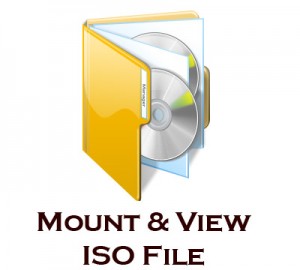

With dh -H we can see on the last line that our USB device is mounted successfully. Next, we mount the drive to /media/myusb: $ sudo mount /dev/sdb1 /media/myusb/ So first we need to create a mount point (directory): $ sudo mkdir /media/myusb You can use multiple options by separating them with a comma (do not insert a space after a comma). To specify additional mount options, you can use the -o option: $ mount -o OPTIONS DRIVE DIRECTORY Use the -t option to specify the file system type: $ mount -t FILESYSTEM DRIVE DIRECTORY Usually, the mount command will auto-detect the filesystem type, but some filesystems are not recognized and need to be specified as a parameter.

To mount a drive we need to assign it a root directory (mounting point) with mount command in the following format: $ mount DRIVE DIRECTORY You can read about specific options in mount man page. We see that the USB drive (partition) is mounted as /dev/sdb1 on /run/media/slax/tribal. dev/sdb1 on /run/media/slax/tribal type vfat (rw,nosuid,nodev,relatime,uid=1000,gid=1000,fmask=0022,dmask=0022,codepage=437,iocharset=ascii,shortname=mixed,showexec,utf8,flush,errors=remount-ro,uhelper=udisks2) dev/sda1 on /boot/efi type vfat (rw,relatime,fmask=0077,dmask=0077,codepage=437,iocharset=ascii,shortname=winnt,errors=remount-ro) USB drive I inserted before was auto-mounted, and we saw that the filesystem is VFAT. We can use mount -t command to list the drive mount options. In this case, we see the USB drive is /dev/sdb1. This is important when we need to find which partition we wish to mount (attach) or detach. Now when I insert USB flash drive, we get another bit of information with fdisk -l: Disk /dev/sdb: 1.88 GiB, 1998585856 bytes, 3903488 sectorsĭevice Boot Start End Sectors Size Id Type Sector size (logical/physical): 512 bytes / 512 bytes Each line contains information about the device name, the directory to which the device is mounted, the filesystem type and the mount options.ĭisk /dev/sda: 223.58 GiB, 240057409536 bytes, 468862128 sectors Securityfs on /sys/kernel/security type securityfs (rw,nosuid,nodev,noexec,relatime)īy default, the output will include all of the file systems including the virtual ones such as cgroup, sysfs, and others. dev/sda1 on / type ext4 (rw,relatime,data=ordered) Tmpfs on /run type tmpfs (rw,nosuid,noexec,relatime,size=100904k,mode=755) Udev on /dev type devtmpfs (rw,nosuid,relatime,size=491472k,nr_inodes=122868,mode=755)ĭevpts on /dev/pts type devpts (rw,nosuid,noexec,relatime,gid=5,mode=620,ptmxmode=000) Proc on /proc type proc (rw,nosuid,nodev,noexec,relatime) Sysfs on /sys type sysfs (rw,nosuid,nodev,noexec,relatime) To display all currently attached file systems we will type: $ mount List Mounted File Systems and Linux Drives On both Linux and UNIX like operating systems we can use mount/umount command to attach/detach devices. We can use the same command to mount the USB drive and ISO image as well.
LINUX ISO FILE MOUNT HOW TO
In this tutorial, we will learn how to mount (attach) a drive in Linux with the EXT Linux file system, FAT or NTFS using mount command. The following is an example command to load a drive 0 from an image.iso: cdemu load 0 /home/nur/images/image.Mount is a command used in Linux to attached filesystems and drives and umount command is used to detach (unmount) any attached file systems or devices. The corresponds to the internal number of drives loaded by CDemu (per default 2 drives, change this in /etc/default/cdemu-daemon to a higher number if needed. To mount an ISO file as CD we can then issue: cdemu load
LINUX ISO FILE MOUNT INSTALL
We can then install the CDemu client and the CDemu daemon with sudo apt-get update & sudo apt-get install cdemu-daemon cdemu-clientĪfter logging out and back in, or a reboot, the daemon will be started.

The application can be installed by adding the following ppa to our sources: Therefore the image does not need to be in ISO format.

Amongst ISO a wide variety of other formats are supported. We sucessfully mounted CD or DVD images for application installation in Wine or for running an application which needs access to its CD using CDemu.


 0 kommentar(er)
0 kommentar(er)
